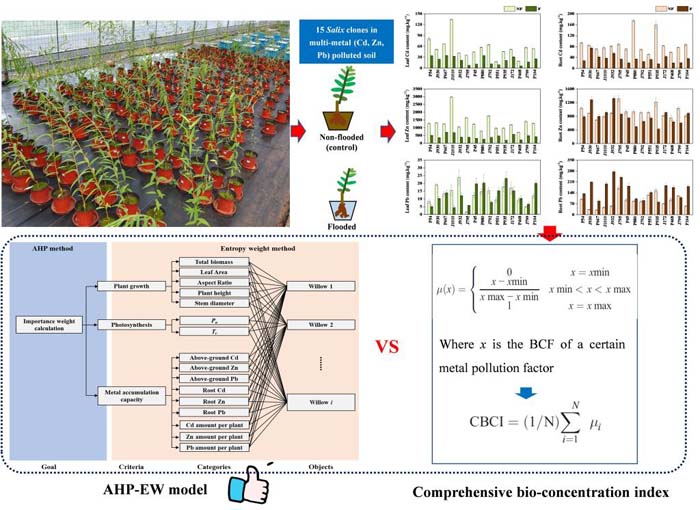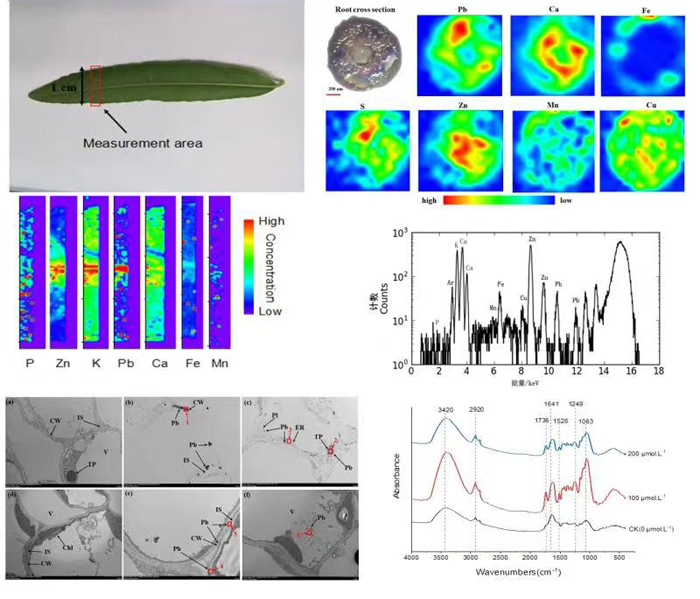
基于CiteSpace的国外植物修复技术研究进展
编号
lyqk008877


中文标题
基于CiteSpace的国外植物修复技术研究进展


作者单位
西安建筑科技大学建筑学院 西安 710055


期刊名称
中国城市林业


年份
2021


卷号
19


期号
3


中文摘要
文章以客观文献追踪作为研究视角,将Web of Science数据库中2000—2019年的文献作为研究对象,依靠科学计量分析软件CiteSpace的数据统计功能,总结国外植物修复研究的学科分布特征、研究基础与研究热点,并对未来的应用研究方向进行展望,以期为相关研究人员提供参考。


基金项目
国家重点研发计划项目既有城市工业区功能提升与改造技术(2018YFC0704900);陕西省教育厅基础研究项目西安曲江城市绿地空间与城市发展的耦合过程研究(18JK0457)


英文标题
Research Progress of Phytoremediation Technology Abroad Based on CiteSpace


作者英文名
Shen Baoju, Huang Jing, Li Hao


单位英文名
School of Architecture, Xi'an University of Architecture and Technology, Xi'an 710055, China


英文摘要
From the perspective of objective literature tracking, this paper collects the literature in web of science database from 2000 to 2019 and makes use of the data statistical function of CiteSpace, which is a science-based quantitative analysis software, to conclude the discipline distribution characteristics, the basis and the hot fields of phytoremediation research, and prospects the future direction of application research, so as to provide references for relevant researchers.


英文关键词
phytoremediation;research review;CiteSpace


起始页码
101


截止页码
106


投稿时间
2020/7/27


作者简介
沈葆菊(1985-),女,讲师,研究方向为城市更新、城市景观设计以及城市风貌规划。E-mail:120568110@qq.com


通讯作者介绍
李昊(1972-),男,博士,教授,博士生导师,研究方向为城市设计、城市更新、公共空间与建筑更新设计。E-mail:651648762@qq.com


E-mail
651648762@qq.com


DOI
10.12169/zgcsly.2020.07.27.0002


参考文献
[1] PILONSMITS E.Phytoremediation[J].Annu Rev Plant Biol,2005,56:15-39.
[2] ALI H,KHAN E,SAJAD M A.Phytoremediation of heavy metals——concepts and applications[J].Chemosphere,2013,91(7):869-881.
[3] MOOSAVI S G,SEGHATOLESLAMI M J.Phytoremediation a review[J].Advance in Agriculture and Biology,2013,1(1):5-11.
[4] SARWAR N,IMRAN M,SHAHEEN M R,et al.Phytoremediation strategies for soils contaminated with heavy metals:modifications and future perspectives[J].Chemosphere,2016,171:710-721.
[5] KATE KENNEN N K.Phyto principles and resources for site remediation and landscape design[M].New York:Routledge,2015.
[6] ULLAH A,MUSHTAQ H,ALI H,et al.Diazotrophs-assisted phytoremediation of heavy metals:a novel approach[J].Environmental Science and Pollution Research,2014:10.1007/s11356-014-3699-5.
[7] ALI H,KHAN E.Bioaccumulation of non-essential hazardous heavy metals and metalloids in freshwater fish. risk to human health[J].Environmental chemistry letters,2018:10.1007/s10311-018-0734-7
[8] PULFORD I D,WATSON C.Phytoremediation of heavy metal-contaminated land by trees:a review[J].Environment International,2003,29(4):529-540.
[9] COMPANT S,CLÉMENT C,SESSITSCH A.Plant growth-promoting bacteria in the rhizo- and endosphere of plants:their role,colonization,mechanisms involved and prospects for utilization[J].Soil Biology and Biochemistry,2010,42(5):669-678.
[10] GLICK B R.Using soil bacteria to facilitate phytoremediation[J].Biotechnol Adv,2010,28(3):367-374.
[11] GERHARDT K E,HUANG X D,GLICK B R,et al.Phytoremediation and rhizoremediation of organic soil contaminants:potential and challenges[J].Plant Science,2009,176(1):20-30.
[12] AHMADPOUR P,AHMADPOUR F,MAHMUD M M,et al.Phytoremediation of heavy metals:a green technology[J].African Journal of Biotechnology,2012,11(76):14036-14043.
[13] CHANEY R L.Plant uptake of inorganic waste constituents[J].Land Treatment of Hazardous Wastes,1983,50-76.
[14] KIRKWOOD N.The role of landscape architecture in urban design education:design studios from Korea university and Harvard university[J].Urban Design and Planning,2017,170(3):133-142.
[15] LEE J H.An overview of phytoremediation as a potentially promising technology for environmental pollution control[J].Biotechnology and Bioprocess Engineering,2013,18(3):431-439.
[16] KAREN E,GERHARDT P D,GERWING B M.Opinion:taking phytoremediation from proven technology to accepted practice[J].Plant Sci,2017,256:170-185.
[17] DOTY S L.Enhancing phytoremediation through the use of transgenics and endophytes[J].New Phytol,2008,179(2):318-333.
[18] IJAZ A,IMRAN A,UL HAQ M A,et al.Phytoremediation:recent advances in plant-endophytic synergistic interactions[J].Plant and Soil,2016,405(1-2):179-195.
[19] AFZAL M,KHAN Q M,SESSITSCH A.Endophytic bacteria:prospects and applications for the phytoremediation of organic pollutants[J].Chemosphere,2014,117:232-242.
[20] BELL T H,JOLY S,PITRE F E,et al.Increasing phytoremediation efficiency and reliability using novel omics approaches[J].Trends Biotechnol,2014,32(5):271-280.
[21] RAJKUMAR M,SANDHYA S,PRASAD M N V,et al.Perspectives of plant-associated microbes in heavy metal phytoremediation[J].Biotechnol Adv,2012,30(6):1562-1574.
[22] RASCIO N,NAVARI-IZZO F.Heavy metal hyperaccumulating plants:how and why do they do it?And what makes them so interesting?[J].Plant Sci,2011,180(2):169-181.
[23] ROSTAMI S,AZHDARPOOR A.The application of plant growth regulators to improve phytoremediation of contaminated soils:a review[J].Chemosphere,2019,220:818-827.
[24] SUKUMARAN D.Phytoremediation of heavy metals from industrial effluent using constructed wetland technology[J].Applied Ecology and Environmental Sciences,2013,1(5):92-97.
[25] CHEN G L,LIU X M,BROOKES P C,et al.Opportunities for phytoremediation and bioindication of arsenic contaminated water using a submerged aquatic plant:Vallisneria natans(Lour.)Hara[J].Int J Phytoremediation,2015,17(1/6):249-255.
[26] BIND A,GOSWAMI L,PRAKASH V.Comparative analysis of floating and submerged macrophytes for heavy metal(copper,chromium,arsenic and lead)removal:sorbent preparation,characterization,regeneration and cost estimation[J].Geology,Ecology,and Landscapes,2018,2(2):61-72.


PDF全文
浏览全文


-
相关记录
更多
- 菌—植体系强化重金属污染土壤植物修复研究进展——以桉树为例 2023
- 世界孑遗红树植物水椰研究进展 2022
- 木麻黄属植物对土壤重金属的富集及修复研究进展 2022
- 国外基于自然的解决方案(NbS)研究进展 2024
- 我国幼儿园自然教育研究现状与展望 2023
- 基于CiteSpace的中国林业碳汇研究进展与趋势分析 2023
 打印
打印

